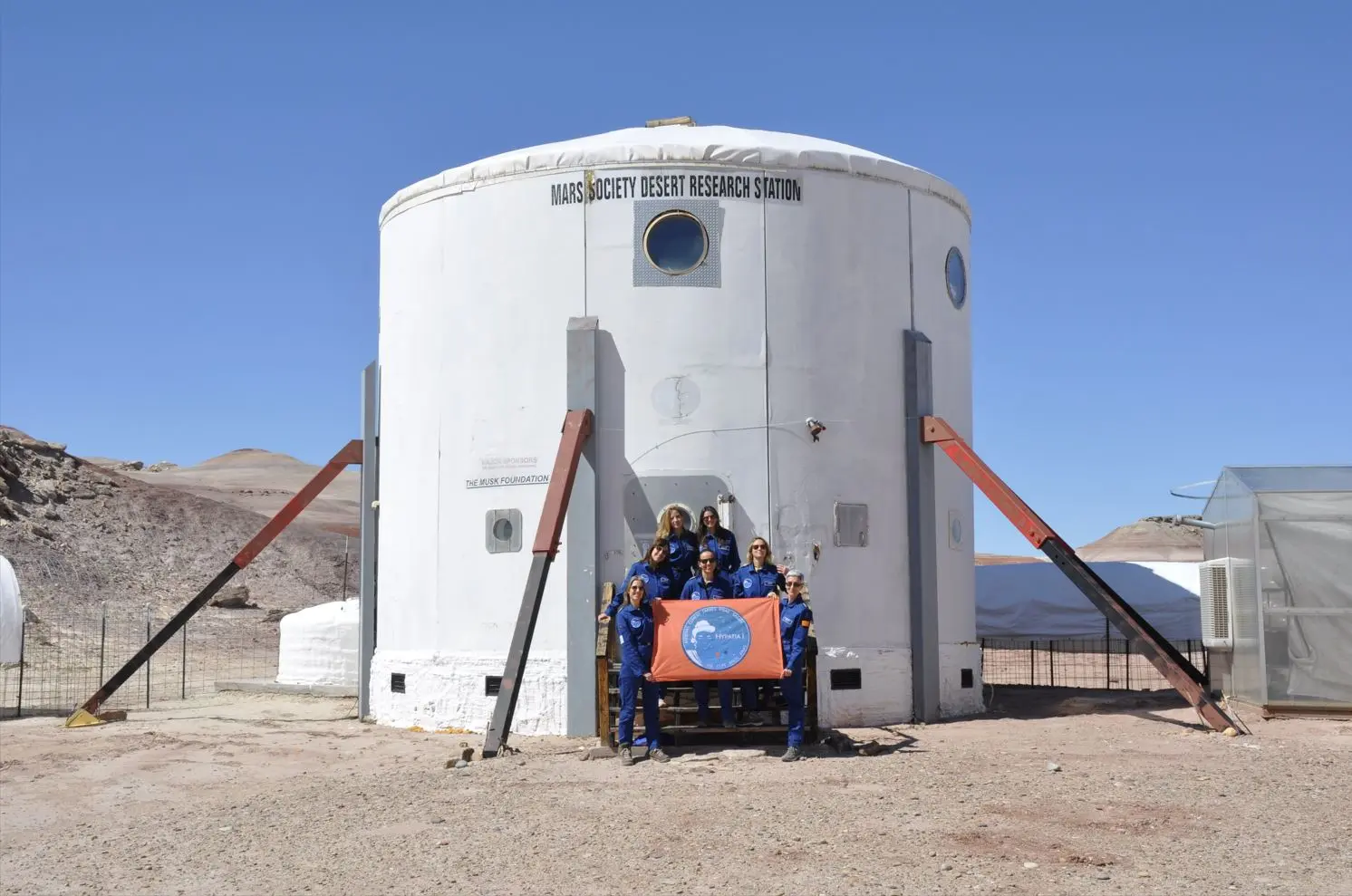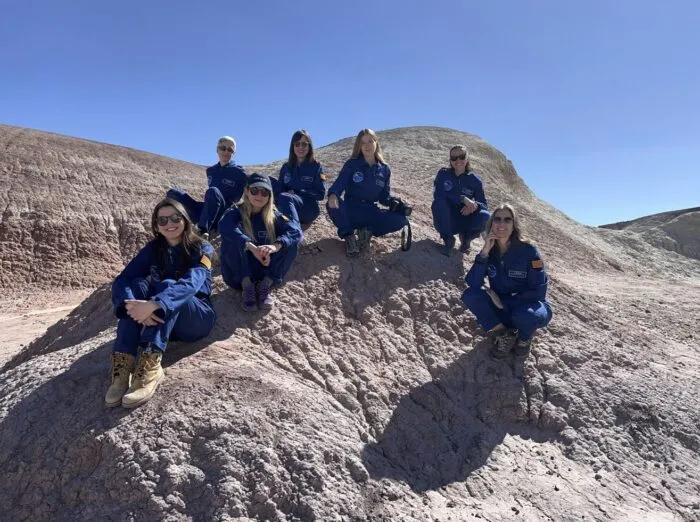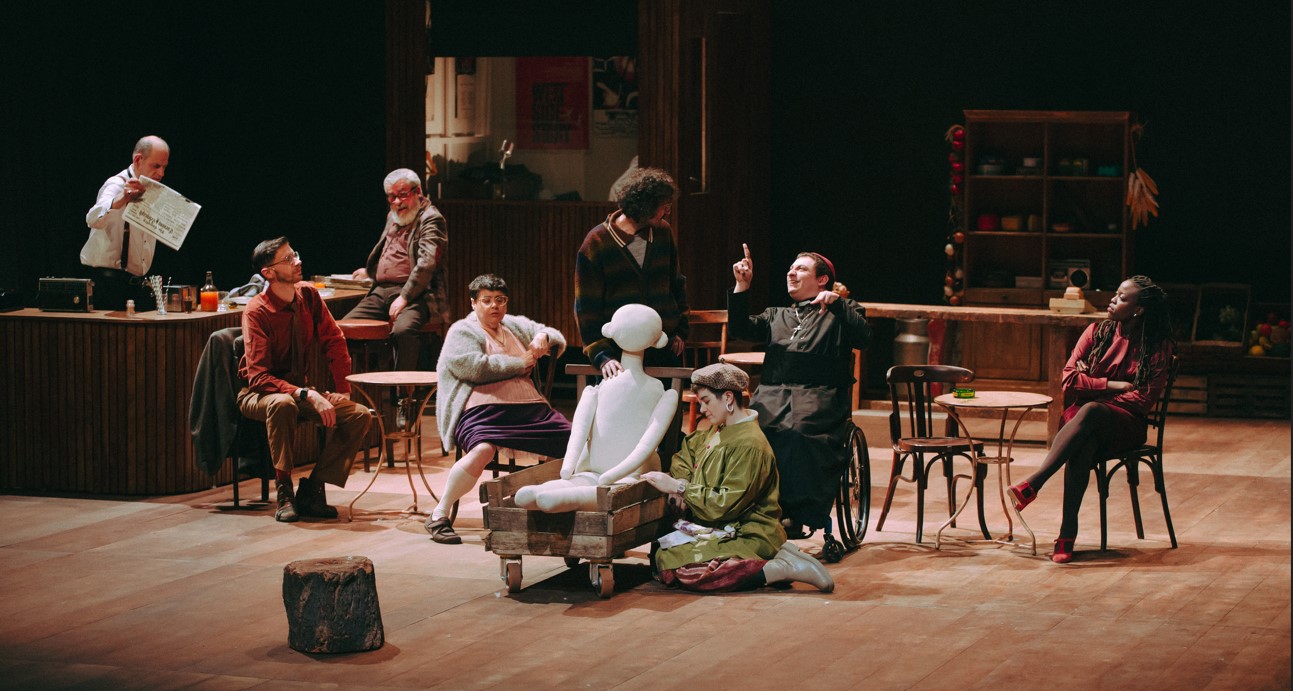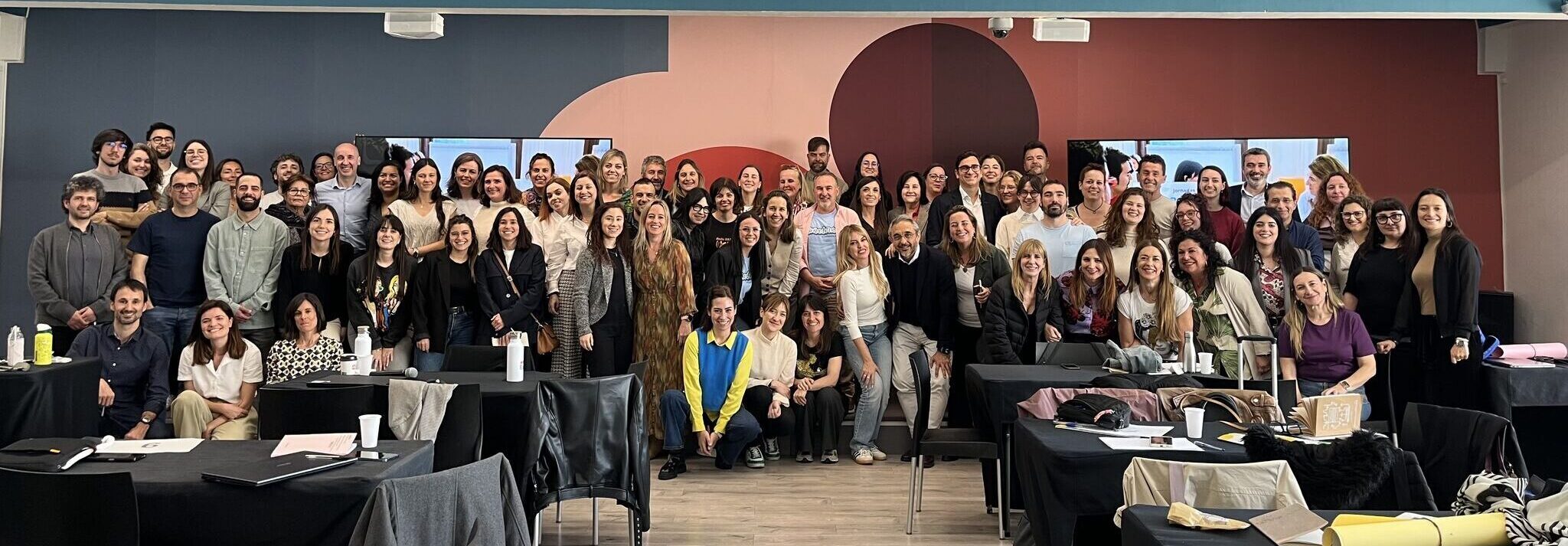
The Hypatia I mission, which took place during the second half of April and is supported by the Banco Sabadell Foundation, was completed successfully in spite of the crew having to deal with limited water, food and communications with Earth.
Crew commander and astrophysicist Mariona Badenas, biologist Carla Conejo, mathematician Ariadna Farrés, researcher Laia Ribas, phyisician Neus Sabaté, aerospace engineer Cesca Cufí and journalist Núria Jar spent 12 days together at the Mars Desert Research Station (MDRS) with the aim of promoting space-related research and giving visibility to the role of women in science.
The station, which is located in the Utah desert, in the United States, has conditions very similar to those on Mars, as the landscape is rich in iron compounds, with extreme temperature swings and low humidity. In terms of water consumption, on average each crew member used just 13.4 litres of water per person per day, compared to the average 105 litres of water consumed per person per day in Barcelona. For food, the crewmembers’ diet during the mission consisted mostly of dehydrated products and food grown at the station’s greenhouse. Communications with Earth were also restricted for the entire duration of the mission.
During the expedition, which the crew described as “very intense”, each crewmember was assigned a different role. Mariona Badenas, the mission commander, explained: “We had to try to balance out our responsibilities as crew members with our research conducted both at the site and on ‘Earth’. In my case, I worked together with my fellow crewmember Carla Conejo (Crew Executive Officer and Crew Biologist) to organise the logistics of the mission, draw up action protocols, etc. In addition, as the group’s astrophysicist, I also conducted a series of scientific projects using two of the telescopes at the MDRS. Among other things, I analysed the Sun’s chromosphere to better understand its magnetic field, I observed several star clusters to determine their physical and chemical properties, and I also dedicated time to astrophotography, taking photos of the night sky to share with the rest of the crew.”
Ariadna Farrés added: “In my case, as Health and Safety Officer it was my job to look after the girls’ wellbeing. My experiment consisted of designing strategies to navigate the Martian surface during our extravehicular excursions, as well as designing a GPS constellation for Mars.”

Inspiring new generations
All nine crewmembers were emphatic in highlighting the mission’s positive impact on society and among children in particular: “We received a huge number of messages from children who had heard about the mission and were curious and excited to learn more about space and to share their discoveries and knowledge with friends and family. Inspiring new generations is one of the main objectives of the Hypatia association, which was set up to give continuity to the project that began with the Hypatia I mission” said Cesca Cufí.
“With Hypatia, we are changing the narrative and putting women at the centre of research excellence. It is a powerful thing to see a group of women coming together to carry out a mission of these characteristics” concluded Nuria Jar.
This project, whose main collaborators include the Banco Sabadell Foundation, is aligned with our commitment to support innovative initiatives that encourage and give visibility to research and that promote talent, particularly among young people.
New mission with new crew planned for 2025
Hypatia has already confirmed that it is planning a second mission for 2025 with a new crew commanded by Carla Conejo-González, Crew Executive Officer and Crew Biologist for Hypatia I. Joining her will be two astronauts from the first edition, mathematician Anna Bach and engineering student Helena Arias, as well as six new crewmembers.
Speaking about the process to select the new crewmembers, who will be announced publicly on social media, Laia Riba explained that they looked for a wide range of different profiles: “The crew for Hypatia I comprised researchers from STEM disciplines (science, technology, engineering, mathematics), but also from other disciplines such as journalism, which was key to the mission’s success. Hypatia I is multi-faceted, it is multi-disciplinary, and this is vital for the success of any research project. ”


